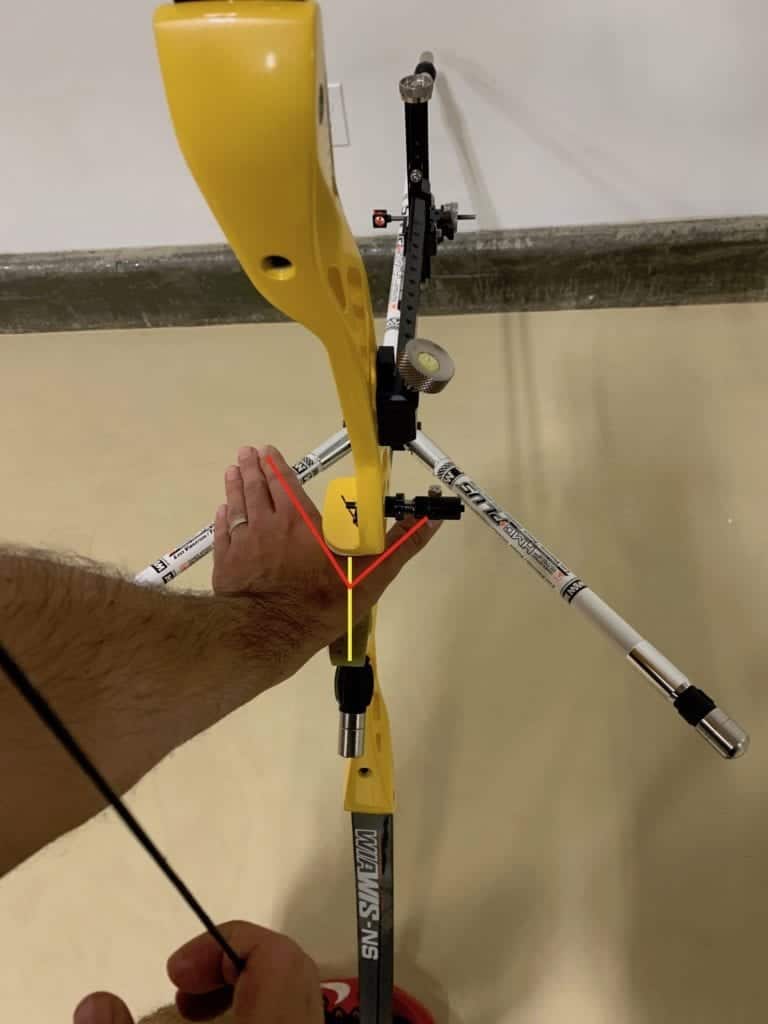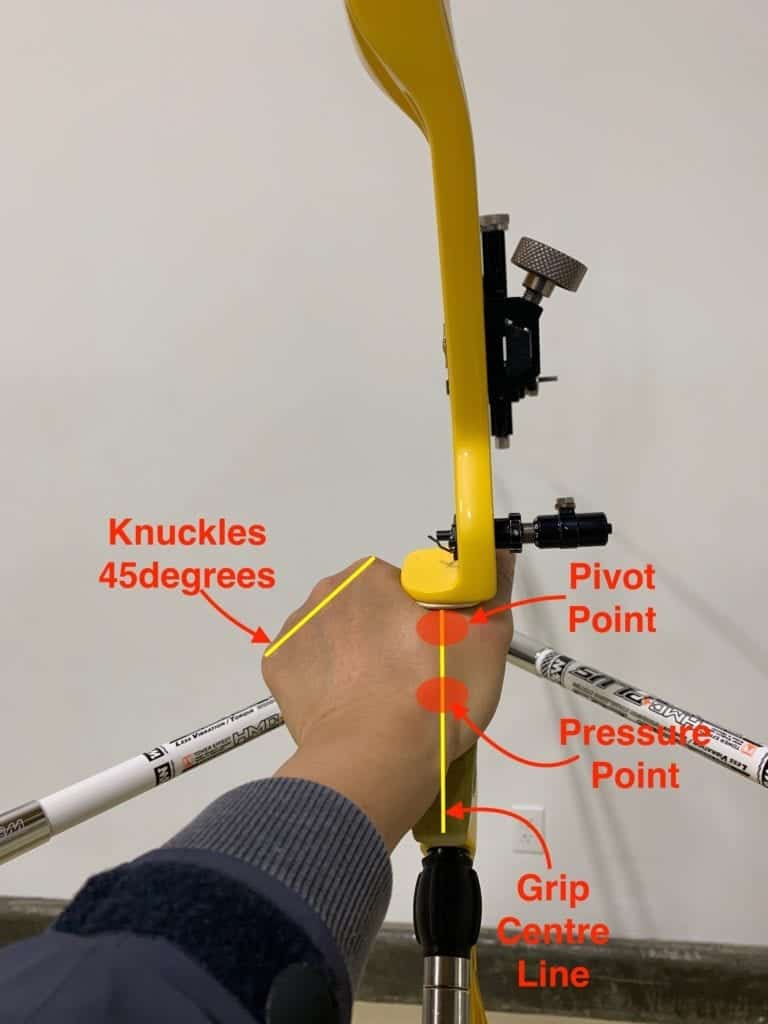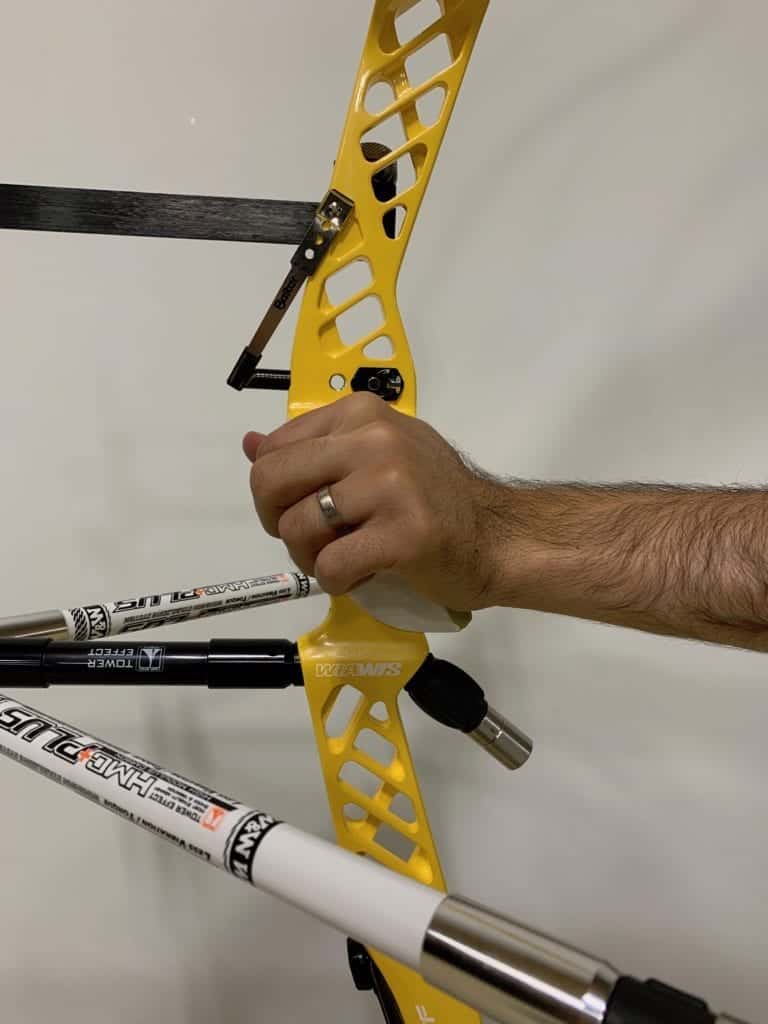Set (Hook & Grip) - Archery Hand Position
Table of Contents
ARCHERY HAND POSITION - INTRODUCTION
ARCHERY HAND POSITION - KEY TIPS
GENERAL
1. Bow on foot. Hook first then ‘v’ of hand in throat of grip. Raise to intermediate set position.
2. Maintain core and posture. Keep shoulders neutral.
3. Bow angled slightly left. Hands positioned to enable bow angle and neutral wrist before opening the bow.
HOOK – DRAW HAND POSITION
1. Hook in first joint of index and middle finger. Slightly in front of joint on ring finger.
2. Pressure roughly 30% top finger, 50% middle finger, 20% bottom finger.
3. Direction of string pressure slightly to pad of fingers, not straight into joint.
4. Draw hand thumb and pinky finger position is personal. Find position to give good wrist and anchor position.
5. Draw wrist neutral.
GRIP – BOW HAND POSITION
1. Place hand in grip by pivot point first, then pressure point.
2. Grip should contact only on thumb pad side of lifeline. Knuckles 45 degrees, pulled slightly back.
3. Direct bow forwards to the target with the thumb. Use a finger sling between thumb and index finger.
4. Experiment with different grip shapes to find one suitable for your hand.
HOW TO POSITION YOUR BOW
There are many different ways you can place your bow for the set position. Like all technique, there is not one position which is best for everyone. However, we recommend starting by placing the bow on your foot. Then, when you set your hook and grip you’ll need to lift your bow to an intermediate position. This overall method pairs well with the square stance that we also recommend to start with.
Again, you can experiment once you become experienced with the basics of the set position.
LIFTING THE BOW
You can see the starting hand position at set in Fig 1a. At this point, you have set your stance & posture and have the bow resting on your foot ready to start the shot.
Firstly, you place your draw hand fingers on the string to form your hook (Fig 1b). Then, you stretch out the web of your bow hand and place it into the throat of the grip (Fig 1c). At this point you should only feel the bow in the web of your hand as shown in Fig 3a by the pivot point circle. Then, you slightly tension the string with the draw arm and lift the bow by directing the web of the bow hand into the bow. This is the set position as you can see in Fig 1d. Most of your pressure should still be directed through the pivot point until coming to the set-up position.
You can also see this full motion in Video 1 below.
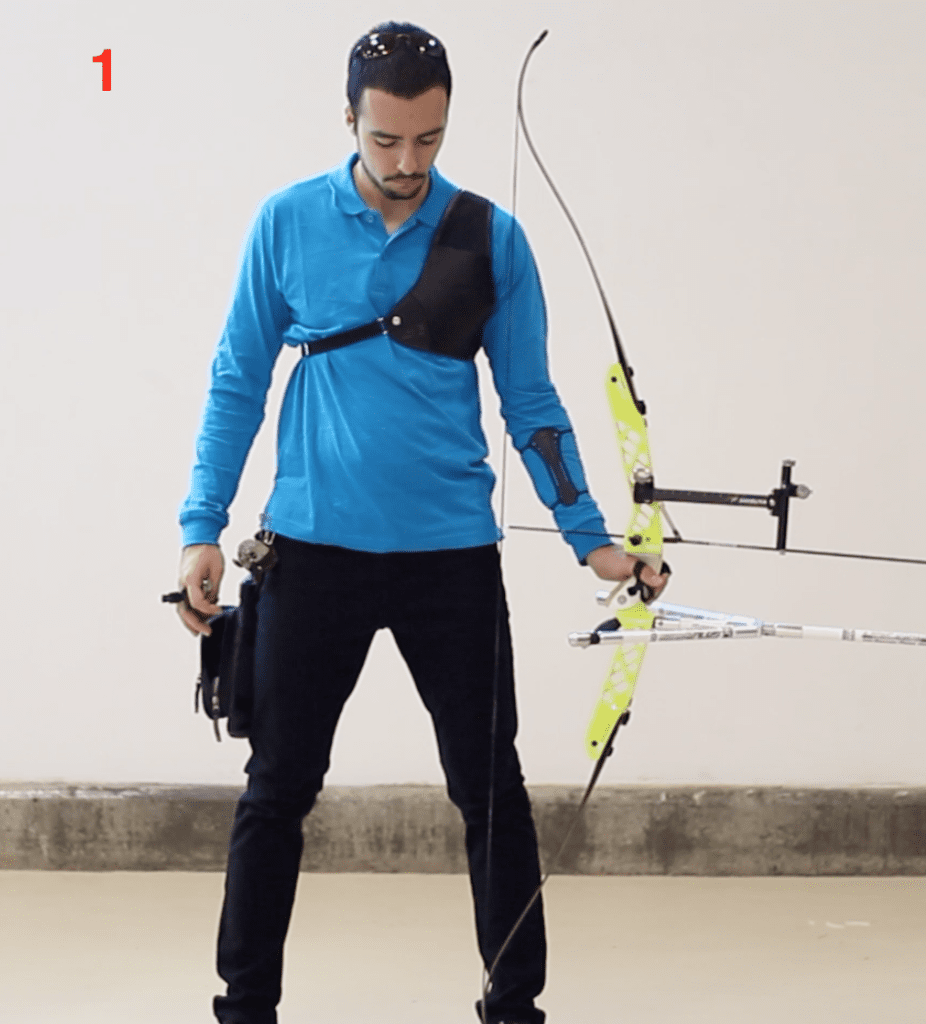
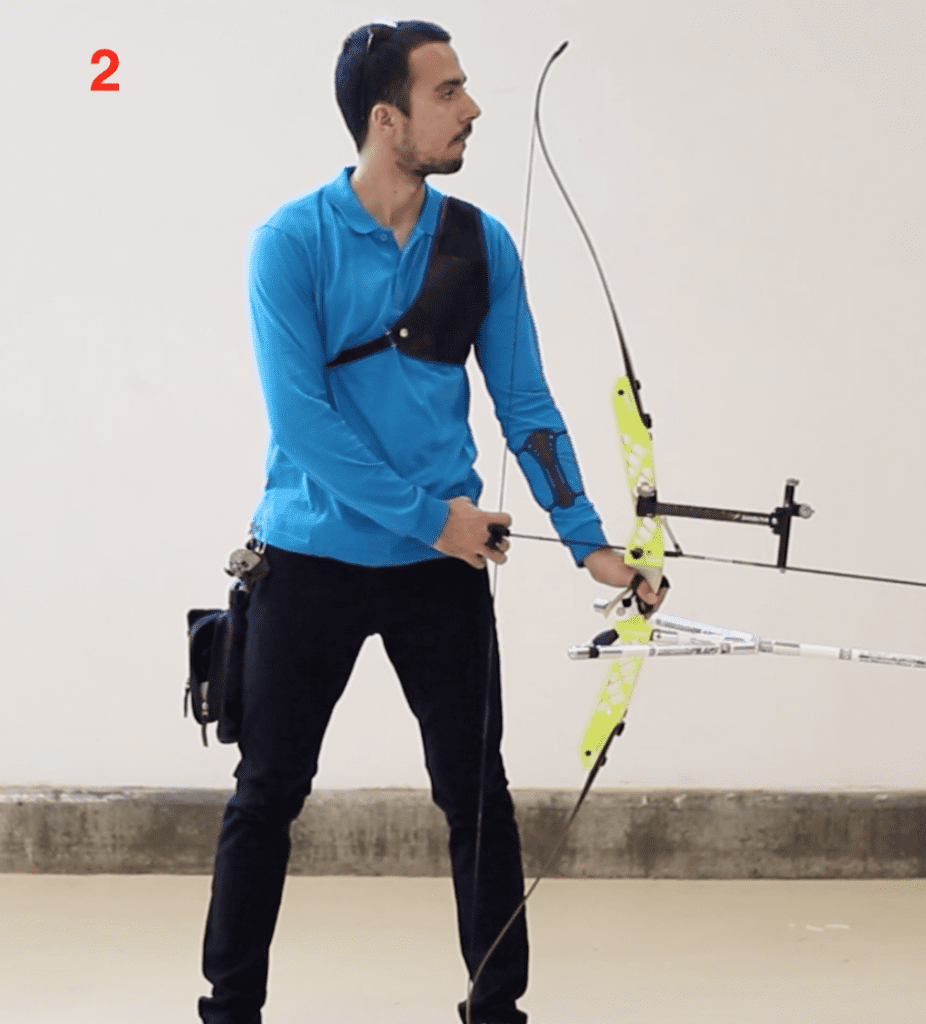
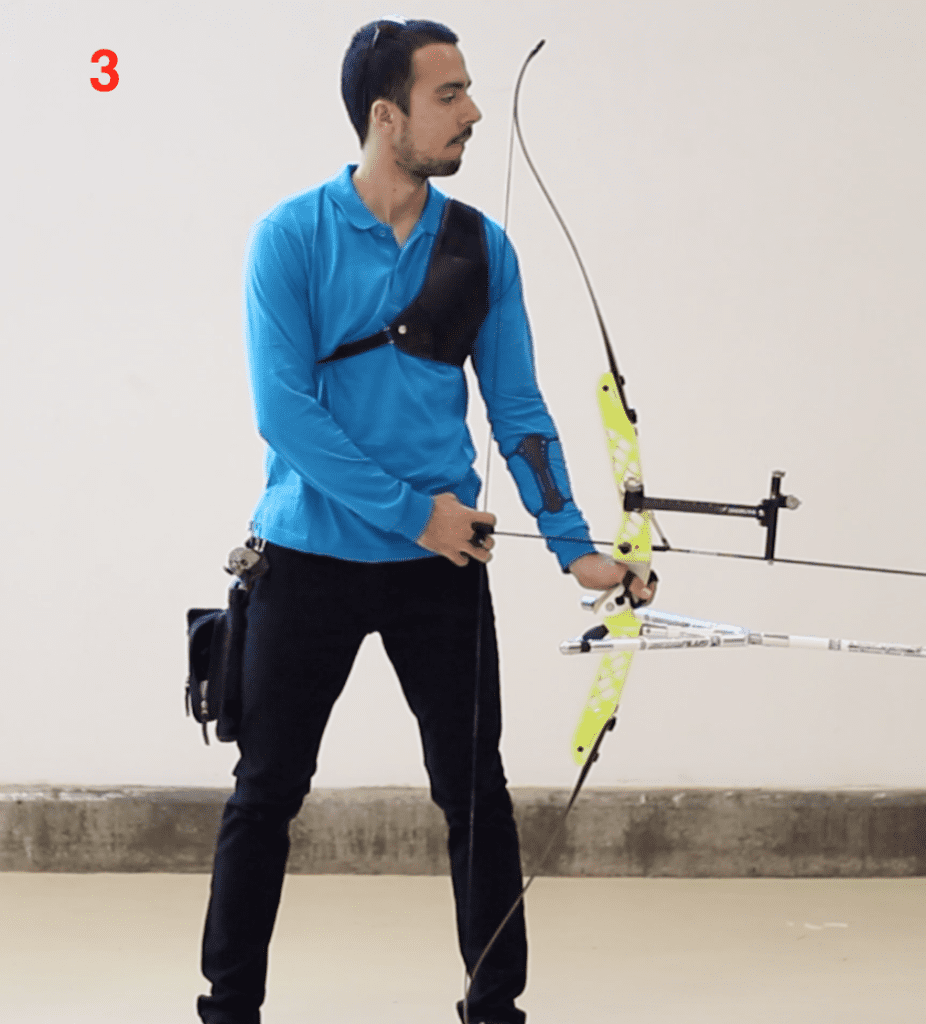
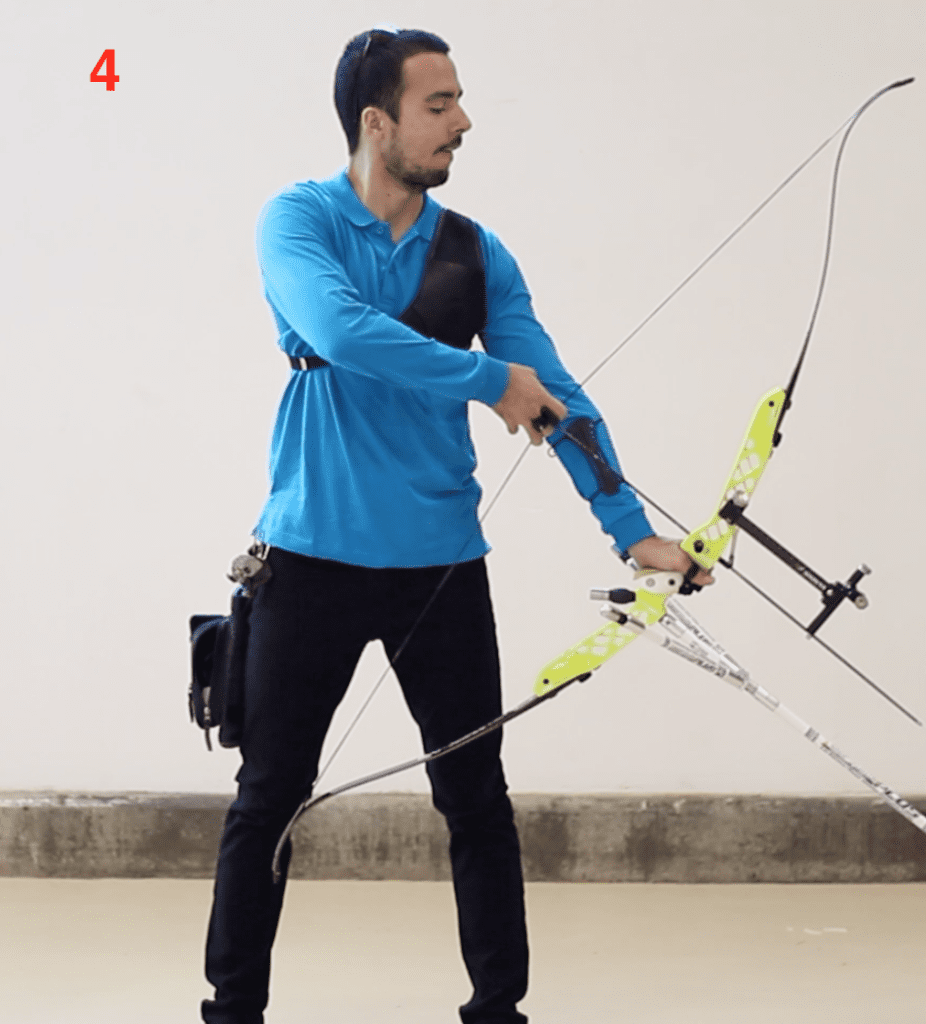
Important Notes
In Fig 2a/b, you can see the position of the bow hand more closely when the bow is on the foot. Touching the back of the bow with your fingers can help to lift the bow to the set position. You can also notice that when the bow is still on the foot, the bow arm elbow is not straight yet.
Efficiency is key in archery, so you should position your hands and bow to make your shot as easy as possible. Don’t place the bow too far away from your body so you have to reach to the grip. If you bring the bow too close to the body it can make it awkward, too. You should aim to have the upper arm of the draw arm close to the side of the body. Furthermore, maintain your draw shoulder in a natural, neutral position.
When the bow is too close to your body, there will likely be a gap between your upper draw arm and the side of your body. When the bow is too far away, you will have to reach too far with the draw hand. And your draw shoulder will raise up and forwards which is not good.
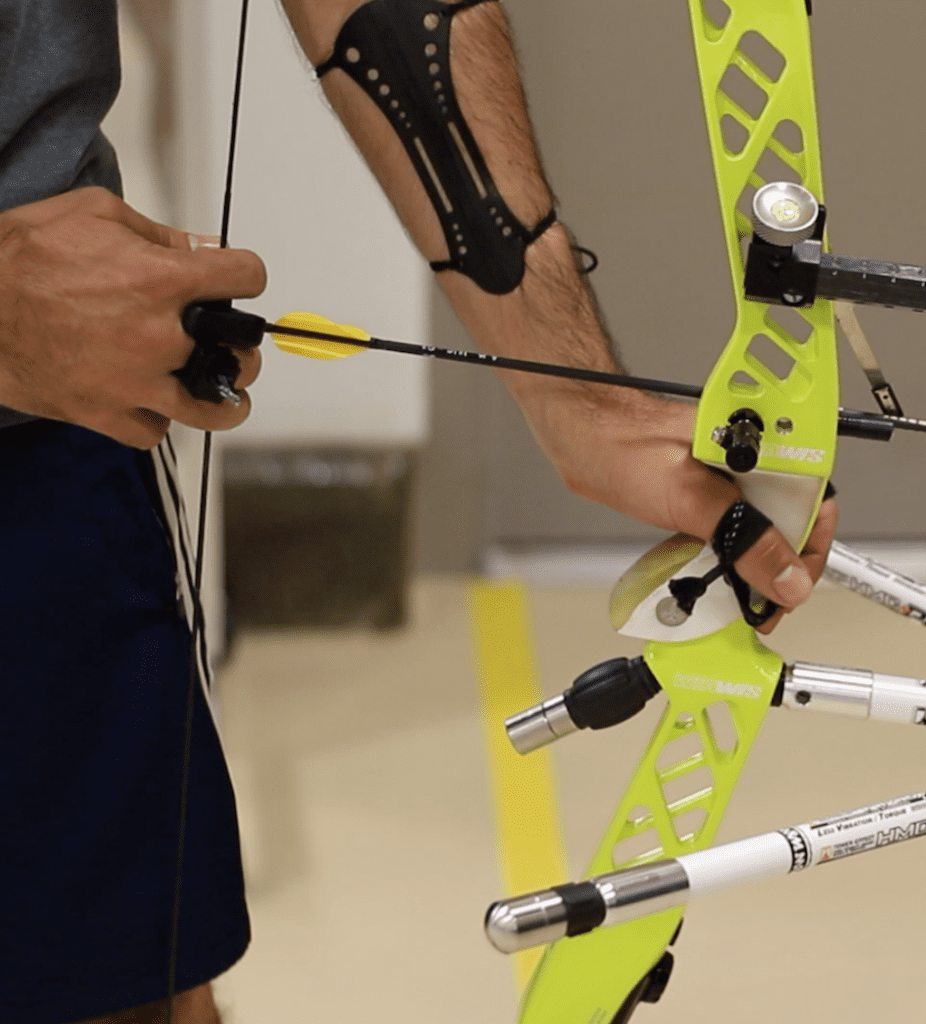
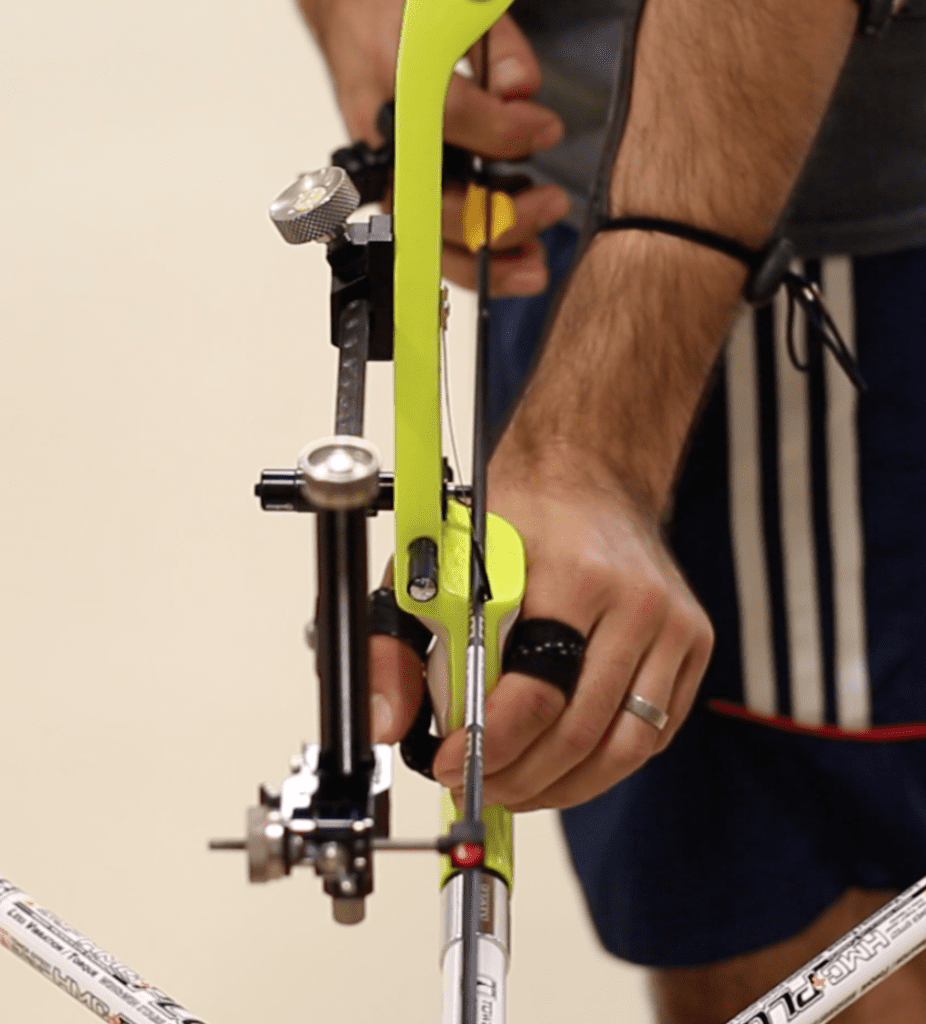
Video 1. Recurve hand position, lifting the bow from the foot and setting the hook and grip
ARCHERY HAND POSITION - THE BOW HAND GRIP
PRESSURE & PIVOT POINT
In archery, the throat of the grip is where you position your bow hand during the shot and this is called the pivot point. When you shoot, you must balance the pressure through the pivot point with a pressure through the bottom of your bow hand (using the thumb pad). This allows you to direct the bow towards the target without tilting it.
As a result of this, there will be a singular point on your grip where it feels as if you are pushing the bow from. And we call this the pressure point. You can see these pressure and pivot points in Fig 3b.
On your bow hand, your pressure point should be on the thumb pad side of the palm of your hand. It is directly below your pivot point in your hand. You can see the bow hand pivot and pressure points in Fig 3a along with the areas where the bow grip should and should not contact.
Video 2. The recurve grip position. Examples from different angles.
PRESSURE DISTRIBUTION
As you raise and then lower the bow to the set-up position, you should shift the distribution of pressure in your bow hand. Initially the forward pressure is solely against the pivot point when the bow is on your foot. This means the pressure point is effectively in the pivot point. During the raising and lowering of the bow, you should increase the pressure through the thumb pad which will move your pressure point down. By the set-up phase, you want your pressure point in it’s final position. This makes sure that you have a solid connection with the bow through your hand and into your shoulder during the rest of the shot.
Lastly, you should align the pivot and pressure points with the centre of your grip. This helps prevent any torquing of the bow when you release
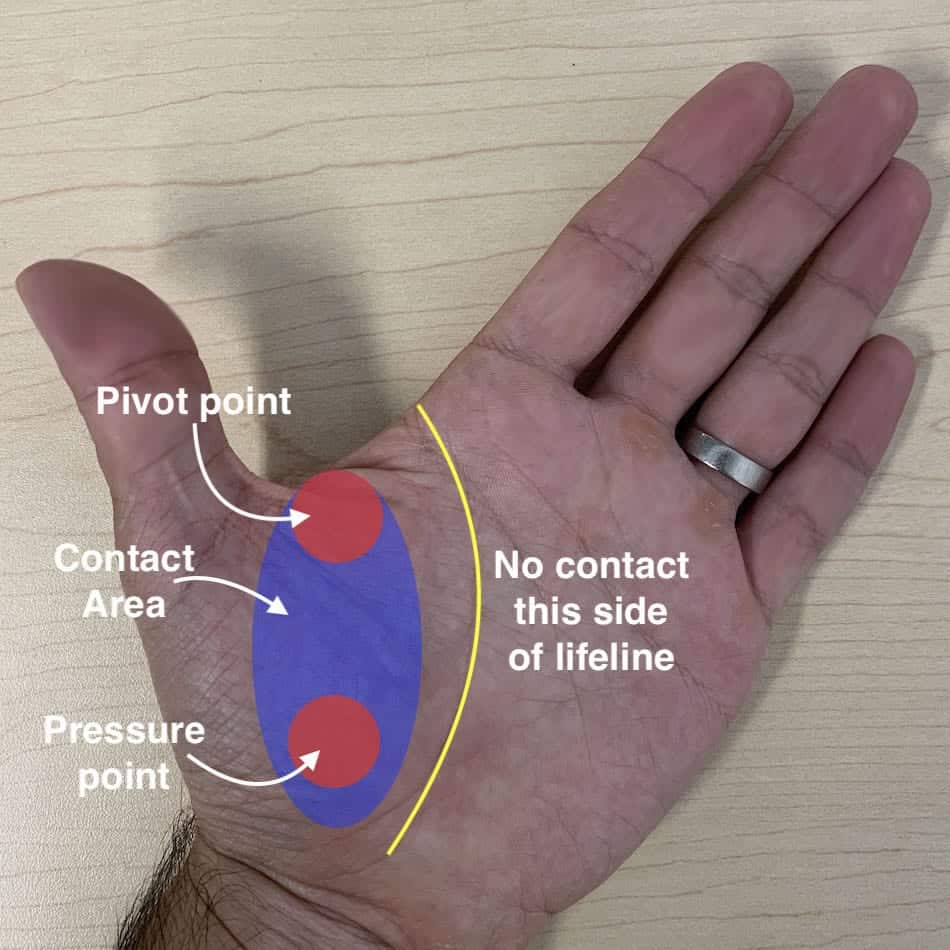
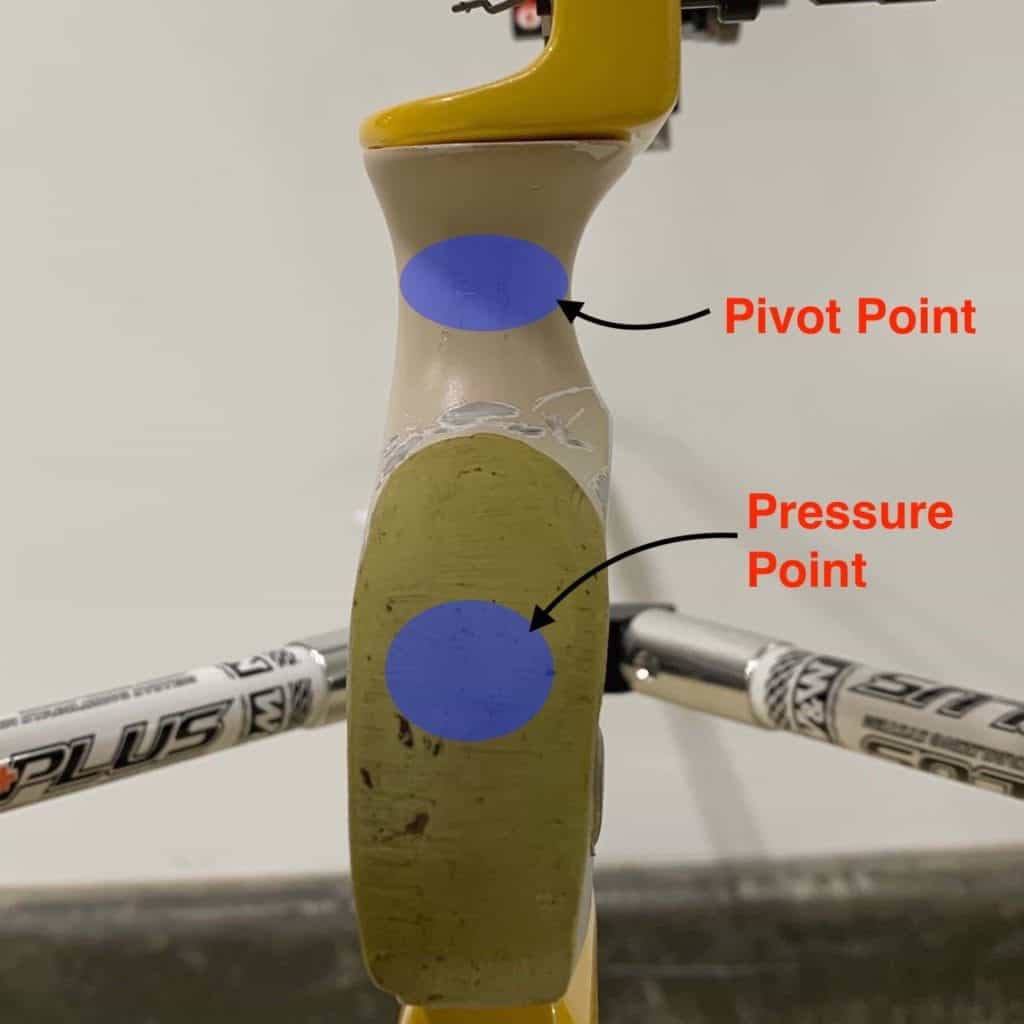
BOW HAND POSITION
The key to correct bow hand position is to firstly start with the correct left/right position. A good way to get the feel of the centre alignment of your bow hand is to perform the exercise shown in Fig 4a. The centre part of the web of your hand should be in line with the centre line of the recurve grip.
Secondly, it is important to place the hand in the grip at the pivot point first, using the slightly stretched web of the hand to initially position your hand. Later in the shot you can then place your pressure point in contact with the surface of the grip.
At full draw, the bow hand knuckles should be at least at a 45 degree angle. This helps you direct your pressure onto the bow more consistently and prevent your hand slipping around the left side of the grip. You can see this in Fig 4b, and notice also how the knuckles are curled (Fig 4c) and not completely relaxed.
